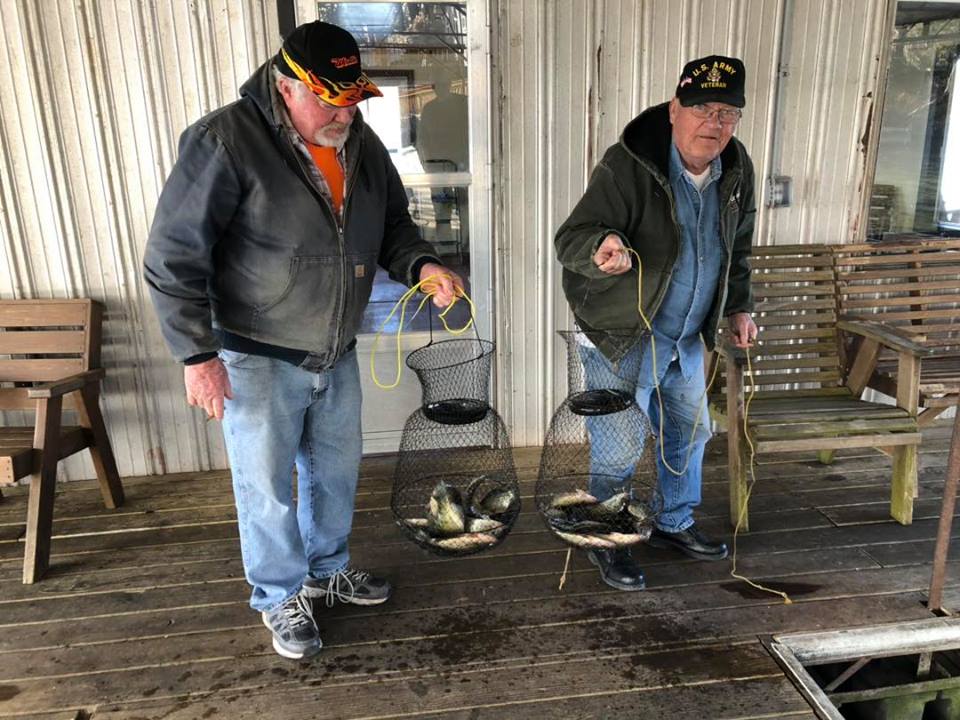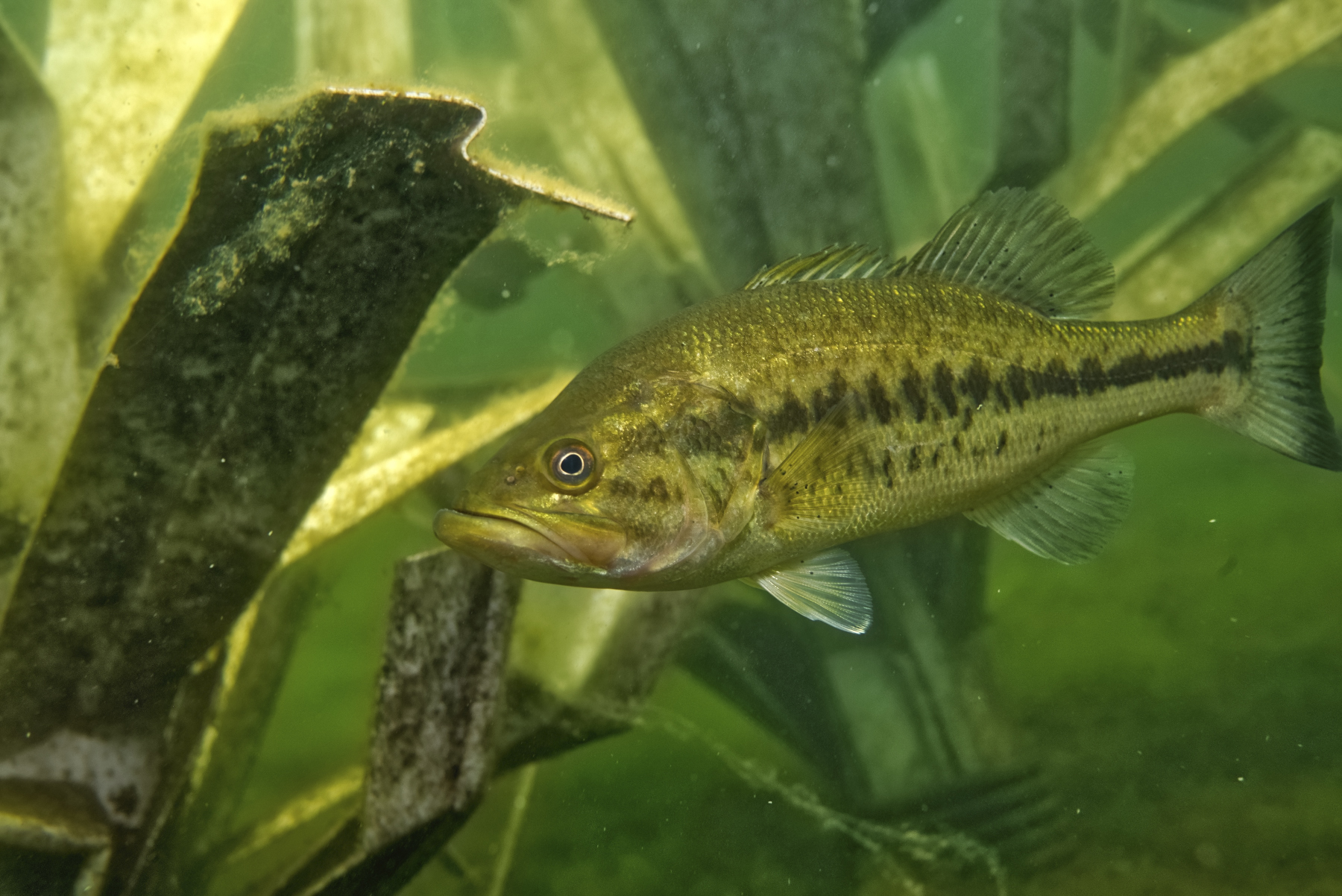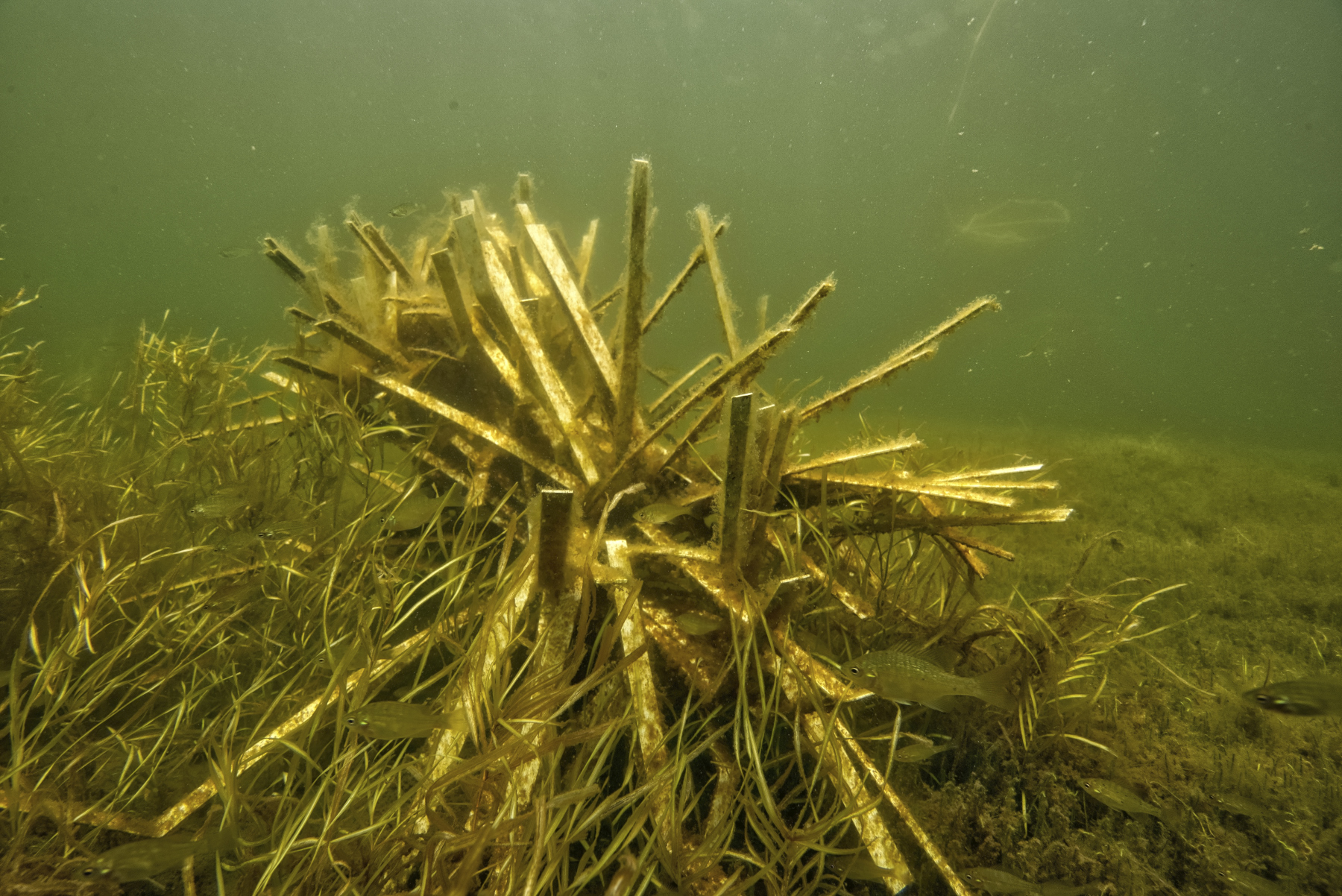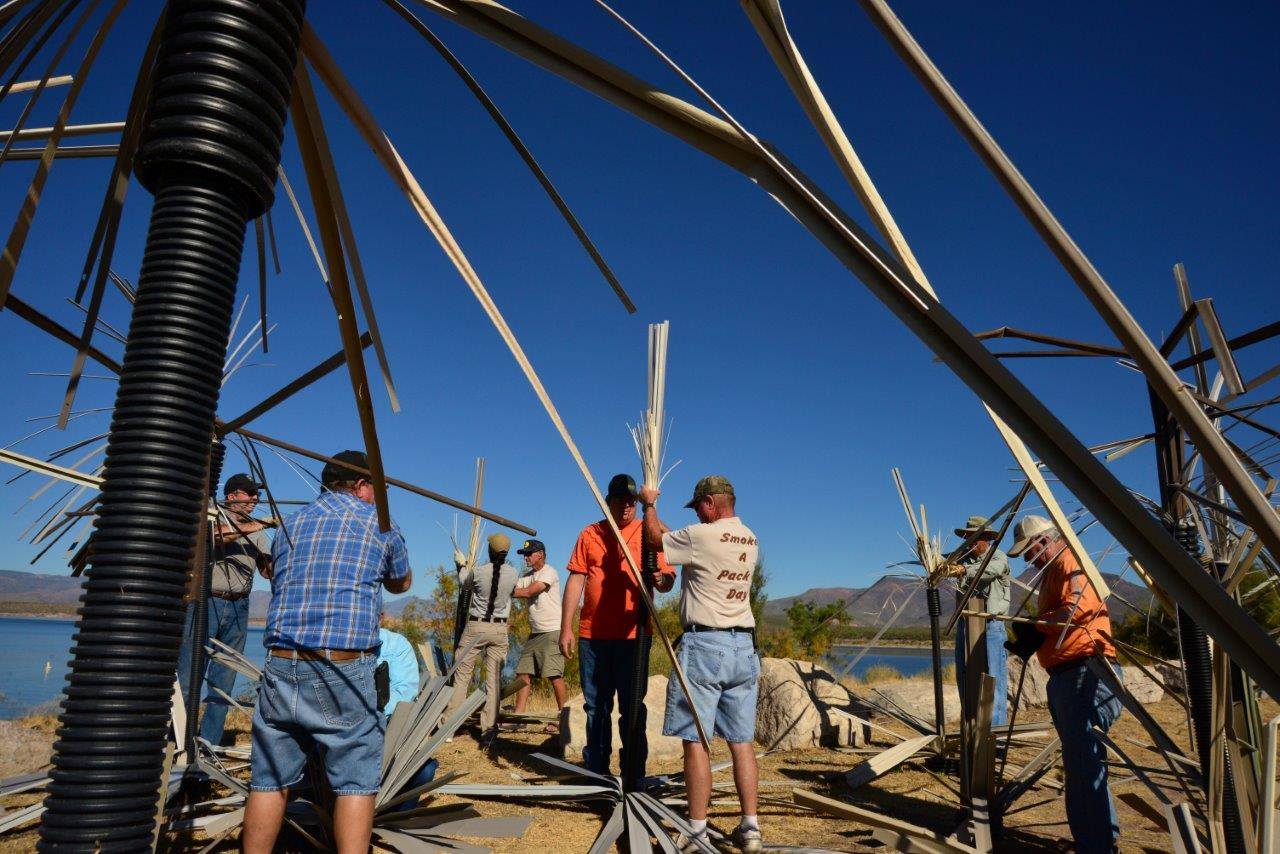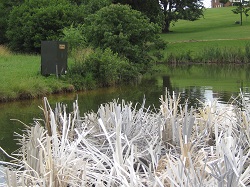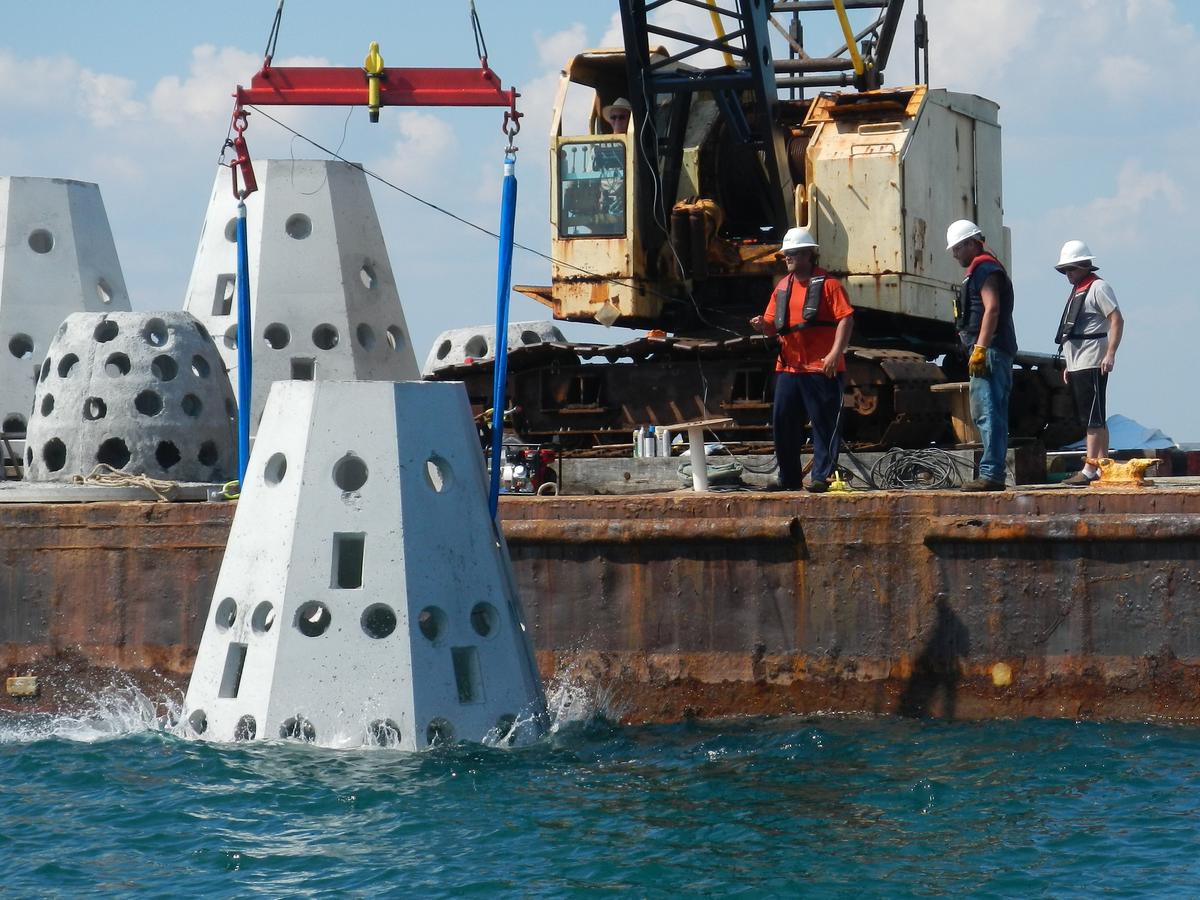Part Seven: The Future of Artificial Fish Habitat
In studying much of the available online literature written about artificial fish habitat, we’ve noticed a curious thing. Often times, the makers of artificial habitat, both the store bought and “homemade” variety, boast about their effectiveness and performance by comparing them to Christmas trees. Using Christmas trees as any kind of bench mark is a straw man argument. Why compare your structures to something that’s widely considered to be one of the least durable and least effective types of fish habitat? Statements like “habitat X outperformed Christmas trees or they held more fish than Christmas trees” are meaningless.
When evaluating artificial fish habitat, we feel that comparisons should be made not to Christmas trees, but to natural elements like 60 foot oak trees or giant white pines that fall in the lakes, huge and gorgeous beds of tall coontail, or bays of dense lily pads and grasses. These are the kinds of fish habitat that truly sustain and provide for current and future fish populations. We all can see how inferior our man made artificial habitat work is, when compared to a full scale, natural habitat. These mega sized and natural objects are the kinds of “real” fish habitat we should all be striving to compete with. Artificial fish habitat should be exceptional or at least really good, not merely good enough. Is the rebuttal simply “Well, we’re just trying to create fish attractors for fisherman, and not really habitat per say”? Creating attractors are a worthy endeavor as well, however, for those interested in creating actual fish habitat, the apparent interchangeability of the two terms often leads to misunderstanding.
Over the course of this series about artificial fish habitat, we’ve shown you a great deal of underwater video of Fishiding habitat in action. This time we’d like to show you something very different. Today’s video illustrates what we need to be striving towards when we’re thinking of future artificial habitat projects. This clip shows how nature provides fish habitat in a vastly superior way than we’ve been able to accomplish so far: This large and majestic pine tree weighing thousands of pounds grew for decades on the shore until it was damaged one night in a thunderstorm. When it crashed into the lake, it began a second life as a home to fish, turtles, waterfowl and dozens of other creatures big and small that would come to utilize it. It’s size and complexity is enormous. The root wad remains on the bank with the top of the tree extending 60 feet from shore over a sharp break line. This created both extensive cover, space underneath and around the tree complex, all habitat that fish could utilize. This is what genuine fish habitat looks like….an authentic Camelot for thousands of fish. Let this be your inspiration the next time you think about what artificial fish habitat could be.
When we compare this single tree to the typical kinds of artificial habitat mankind has come up with so far, our shortcomings are starkly apparent. We have all been thinking much too small. The challenge is not to make something that may function as well as a new Christmas tree, but to have higher aspirations, daring ourselves to design and deploy the kinds of habitat that Mother Nature herself will approve. Nature and all the creatures above and below the waterline are speaking to us, we just need to listen.
Fishiding.com is excited to announce their new line of products for 2019 called Fish Habitat Mats. This modular, fully customizable and self-contained system, could very well change the direction and future of habitat installations as we know them today. Attributes never before seen include gigantic size in all three dimensions, intricate and unlimited complexity, huge underwater footprint and towering vertical height. In the next part of this continuing ten part series, we’ll show you the revolutionary new design that’s recently been placed in Lake of the Ozarks and is already full of fish. This first ever Habitat Mat installation was comprised of dozens of individual habitat structures and is believed to be the largest and most sophisticated of its kind ever used in a single location in a public lake environment.
Designing and building effective fish habitat is a genuine science. It’s still in its infancy, but we’re learning a great deal every day about the nuances of design and deployment. With today’s deep interest in artificial fish habitat, we’re eager to share our findings with fisheries professionals who want to learn more.
If you’ve missed any part of this series you can catch up at https://www.youtube.com/watch?v=6Krzy…
For more information contact David Ewald at https://www.fishiding.com
Phone: (815) 693-0894
Email: sales@fishiding.com
